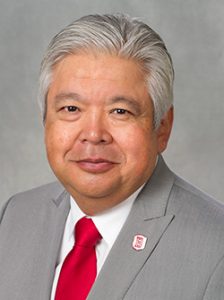While the college experience is usually seen as enrolling in a four-year college as a freshman, others take the route less traveled by transferring into a four-year college after a certain period of time or transferring from one college to another.
At Bradley, the number of transfer students coming to campus has increased in the past two years. In 2017, the overall number of transfer students has been 272, while in 2016 and 2015 it was 234 and 228, respectively, according to Enrollment Management.
Vice President for Student Affairs Nathan Thomas said the retention rate, defined as the period between freshmen and sophomore years, was 87 percent for 2016. Additionally, Thomas said the retention rate for the past five years as well as the past 10 years is similar to this year’s.
“Our national peer-set by how we get classified with other universities, we’re above the national average, which I think that national average is … 81 percent,” Thomas said. “When we look at our peer set, and we have identified peers that we fall into, we’re kind of in the middle, and that’s why we want to do better.”
According to Vice President of Enrollment Management Justin Ball, the reasons why students transfer vary, but one of the most common reasons is students coming from community colleges.
“We have a large group of transfer students who begin their college education at one of the community colleges and then transfer to Bradley,” Ball said. “This includes our largest group of transfer students who come from Illinois Central College.”
Because such a large amount of transfer students comes from ICC, Ball said Bradley puts in extra effort to reach out to potential transfer students to provide them with information they may need.
“Staff from the Office of Undergraduate Admission are regularly at ICC and many other community colleges working with students who are interested in transferring, as well as staff and faculty, so they all can understand the value of a Bradley education, what programs we offer and how to best use the courses available in the degree programs at their college before transferring,” Ball said.
As for why students transfer out of Bradley, they leave for a number of reasons, according to Ken Harding, director of employer testing services at the Smith Career Center.
“I would say as an advisor who has worked with a variety of Bradley students as well as students from other colleges who want to transfer, [the reason they transfer] is often related to their desired major,” Harding said via email. “Sometimes students will realize that they want to prepare for a career that isn’t a great match with their school’s programs – that happens at all schools.”
Additionally, Harding said the reasons for leaving could just be because of a difference in expectation.
“Sometimes students just find that their college or university doesn’t have the same feel to them as it felt when they first visited or applied or arrived,” Harding said. “We have some students who leave Bradley for reasons like this, and we have other students who transfer to Bradley from other schools for the same reasons. “
Executive Director of Student Support Services Anne Hollis said from the exit surveys students fill out when transferring, the most common reasons are because they want to be closer to home. They typically transfer to a community college for a few years, change their major to something not offered at Bradley and then want to attend a different sized school and for financial reasons.
To aide in retaining students, Thomas said part of the Strategic Plan includes goals to identify reasons why students stay at Bradley, and figuring out how to increase the overall retention rate.
“One of the [ways we try to increase retention] is through the Academic Success Center, and that’s launching this year,” Thomas said. “The other one … that’s also attached to the Academic Success Center is the Student Success Collaborative.”
For students who have transferred to campus, Thomas said Bradley has the Office for Transfer Student Assistance and utilizes a transfer student orientation, transfer aides and a specific section of a course, EHS 120, which is designed for transfer students to help integrate them into the Bradley community.
“If we’re getting [a student] here, we want [them] to stay and graduate from here as well,” Thomas said.




